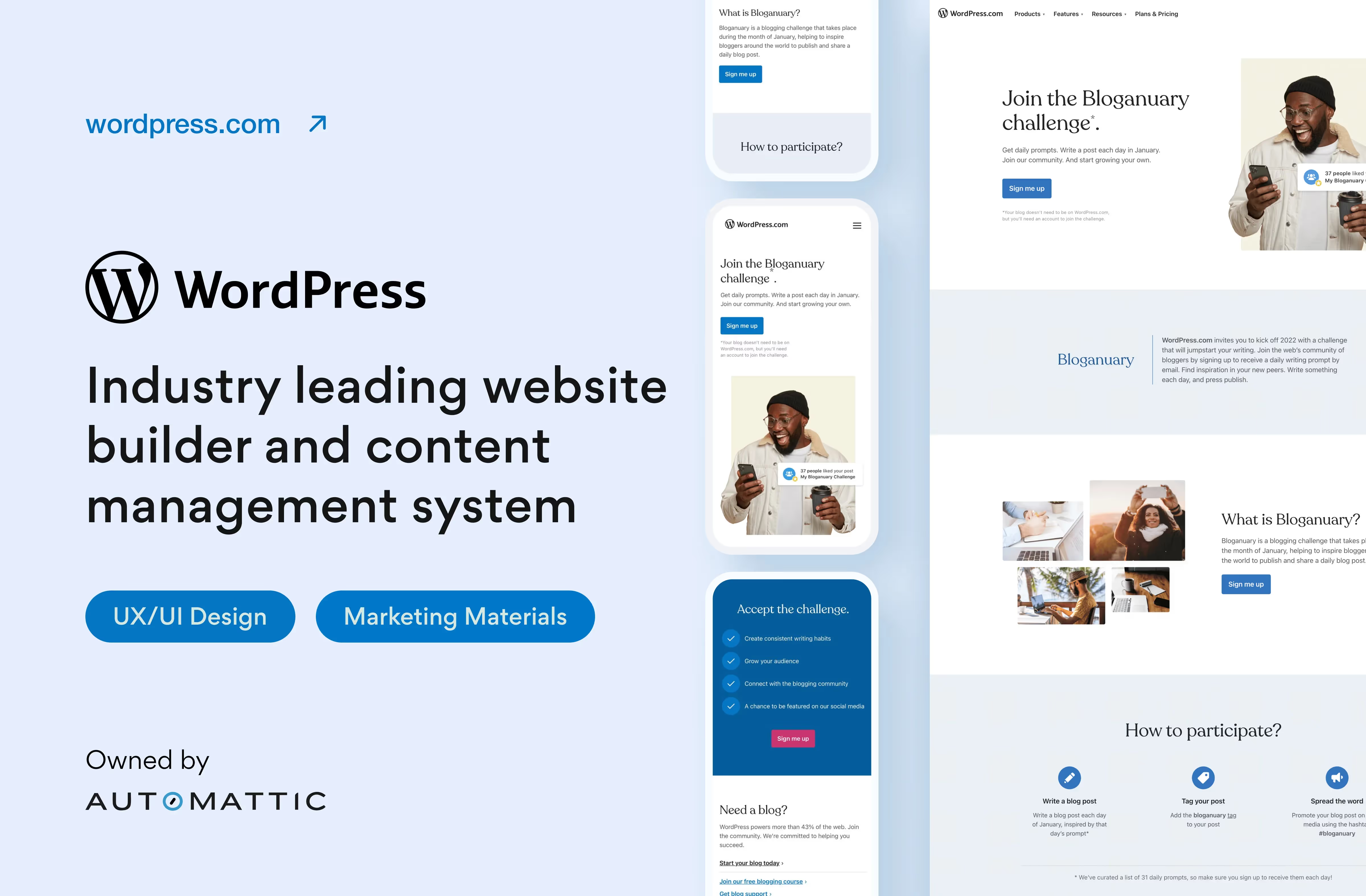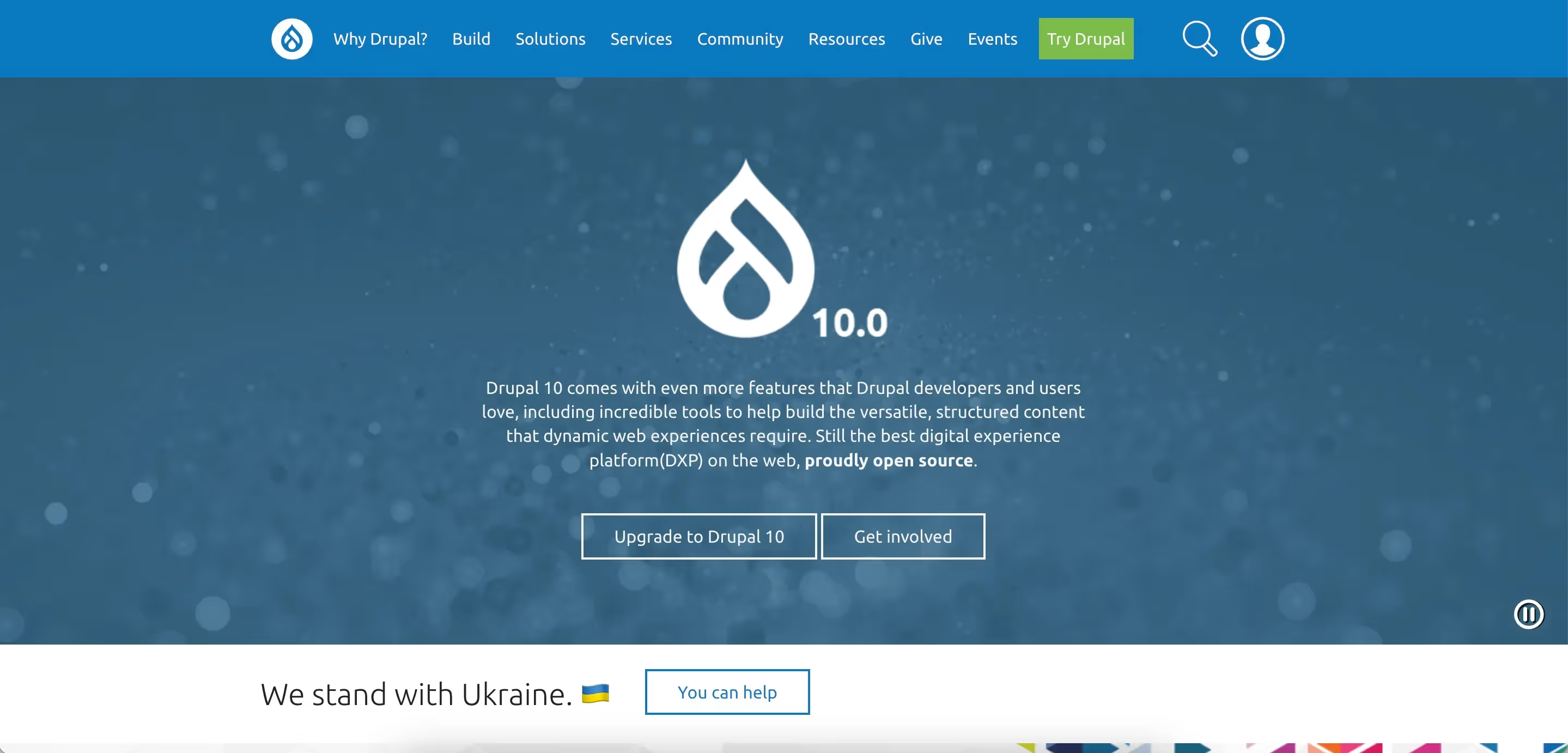If you are ready to enhance your web design with expert solutions, let’s talk!
The CMS for a web designer is like an oven for the cook. It defines how well you can transform your content into something ‘appetizing’. While all web builders enable you to create pages, organize hierarchies, edit themes, add various features, and use multiple languages, some Content Management Systems are more advanced and flexible.
Many specialists use CMSs, but Arounda agency has the advantage of being a product company where designers and developers dig into technical details and advanced features of different tools. So in this article, we share our findings and reveal the advantages and drawbacks of the five best CMS for designers.
1. WordPress
Did you know that 43% of all web run on WordPress? This is currently the world's most popular CMS, which allows the creation of all types of websites from simple blogs to complex corporate portals.

Pros
- WordPress is simple. If you can use Microsoft Word, you will also cope with the WordPress content management editor.
- There is a plugin for every feature that is not in the WordPress core, so you can add social network icons, spam protection, sophisticated forms, calendars, etc.
- The CMS is optimized for search engines, and there are plenty of SEO plugins for fine-tuning.
- WordPress has logical and robust user management with five access levels, such as author, editor, administrator, etc.
- WordPress is open-source, meaning it is a free CMS web design option.
- WordPress has a powerful team of developers and is continuously improving. Arounda knows this from our own experience of collaboration with WordPress.
Cons
- Using WordPress requires some technical knowledge.
- It is quite vulnerable to hacking attempts.
Bottom line: WordPress is the most universal, simple, and friendly CMS with a solid reputation and world recognition. It will do the job with any site except e-commerce portals, for which you will need more specialized tools.
2. Joomla

Joomla is an open-source CMS created by hundreds of volunteer developers worldwide. Joomla content editor works by the principle WYSIWYG (What You See Is What You Get), making it very easy to use.
Pros
- The Joomla extensions directory contains thousands of verified third-party extensions, and most of them are free.
- It is a multilingual platform with 75 language packages.
- Joomla has a strong community including high-class developers who actively consult on forums, create video tutorials, and provide extra documentation.
- The CMS has unique and handy features such as `One Click Version Update` or a banner management tool.
Cons
- Adding extensions and modules sometimes results in compatibility problems.
- The installation process may be challenging.
- Joomla is best suited for tech-savvy users.
Bottom line: Joomla is a free and reliable open-source CMS for web designers who like to build something original and are not afraid to dig into technical nuances.
3. Drupal

Drupal is more than just a user-friendly content management tool that enables creating, editing, and publishing web content. It has a significant ‘ready-made’ template base. But if something you want isn't available, you have all the resources to build it yourself. For example, you can define themes, modules, fields, workflows, and more.
Pros
- Drupal is platform-independent. It works well with Linux, Apache, Windows, IIS, or an SQL Server.
- The framework has powerful taxonomy and menu structures, giving broad possibilities to categorize content and define a hierarchy.
- It’s a decoupled and headless CMS. Once you have created content in the back end, the system will format it for single or multiple front-ends. This will save you time delivering a new version or modification.
Cons
- Drupal is a complex environment with lots of features and options. Comprehending the system without any previous web development experience may be difficult.
- Although Drupal has a strong community, customer support is spare.
Bottom line: Drupal content management framework provides outstanding customization opportunities. You can construct tiny personal sites as well as huge corporate platforms. Did you know the Australian Government, CBN News, and Tesla websites are built on Drupal?
4. Shopify

Shopify CMS is built for e-commerce. It includes all the main tools merchants require to launch an online shop. For example, Shopify makes adding new products with images and descriptions a piece of cake. You can also drag and drop the items on the page and rearrange the page structure from the same interface.
Pros
- Shopify provides over 120 free and paid themes with full access to HTML and CSS, so you can customize themes to your needs
- All Shopify stores get secure hosting and unlimited bandwidth. Merchants don’t have to search for a third-party server to accommodate their content-heavy sites
- In-built marketing features help you promote products. For instance, your store knows how to rank SEO keywords
Cons
- Slow loading speed, especially on mobile environments.
- You have to know Liquid programming language to modify themes.
- A headless or open-source CMS may provide more flexibility.
Bottom line: Shopify CMS web design is a great option for e-commerce, allowing you to start small very quickly. However, it isn’t free and going beyond the available templates will require some technical expertise and effort.
5. Adobe Commerce
Adobe assembles B2B, B2C, and D2C business models in a single system. You gain access to fast ordering, quoting, custom catalogs, price lists, and other tools.
Pros
- Adobe Commerce integrates smoothly with various accounting software and fulfillment providers.
- Supports stock replenishment and forecasting and other advanced inventory management techniques.
- Adobe provides an extension to connect your store to Amazon directly and offers integration with Google Shopping.
- Aggregates data from the store, social media, and all other sources on a single cloud-based warehouse which gives the company a comprehensive view of business affairs.
- Adobe dashboards allow you to check up on popular metrics like AoV or CLV and make data-informed decisions.
Cons
- Relatively few plugins are available.
- Can be complicated and require the help of a dedicated developer.
Bottom line: Adobe Commerce is a world-class e-commerce engine to manage B2B, B2C, and D2C businesses from one platform. This is one of the best CMS for designers.
Conclusion
Your CMS is the backbone of your online presence, so you should choose wisely. In this article, we described five great CMS for designers.
To make the final choice, answer the following questions:
- Do you work with local, national, or global audiences?
- What hosting options will suit you best?
- Who is implementing and administrating the CMS?
- Do you need integrations with CRM or ERP?
- Do you need to plug into Amazon or Google store?
- Is loading speed critical for you?
Arounda agency has been in web design for five years now. We have tested several CMSs as we created solutions for numerous startups and SME clients. If you need experienced professionals, who know how to choose and wield the right tools for complex web design projects, contact us.














